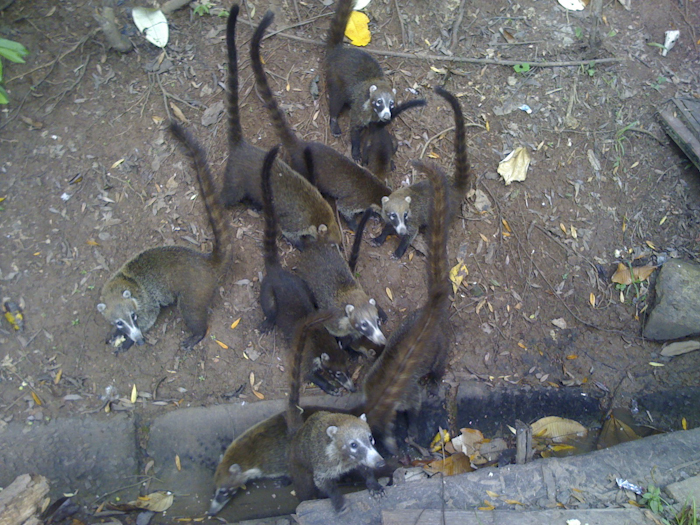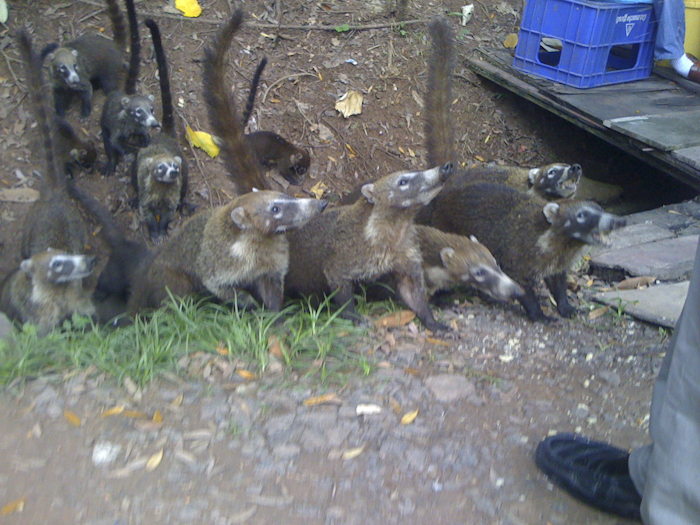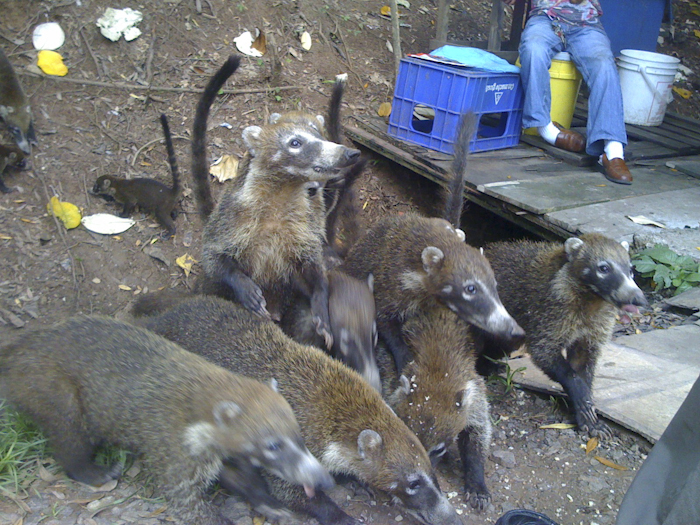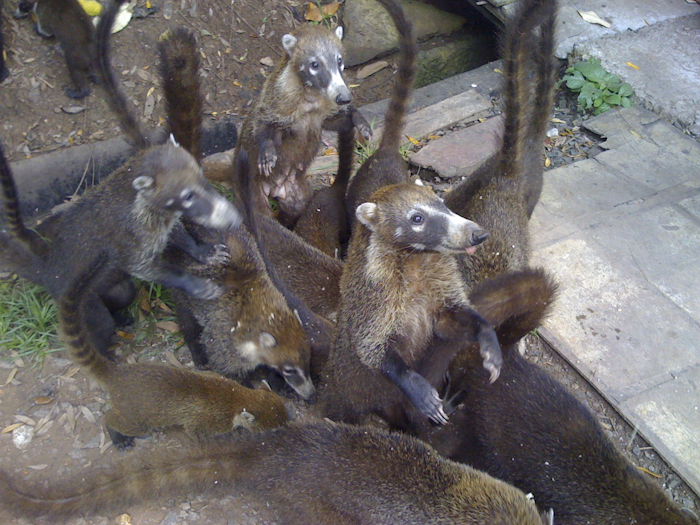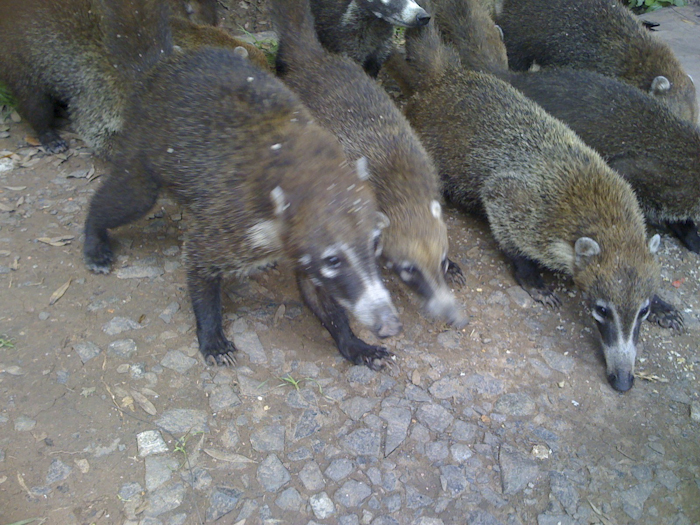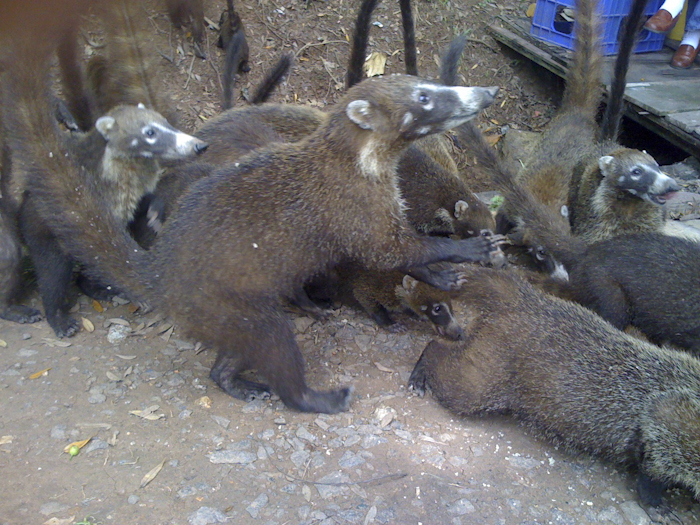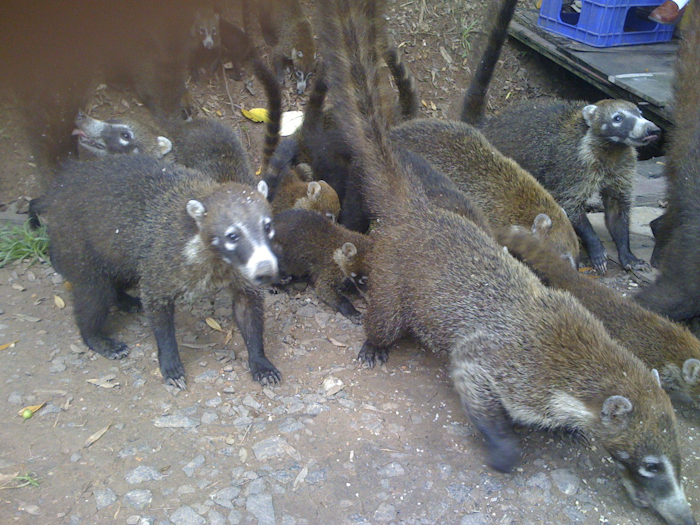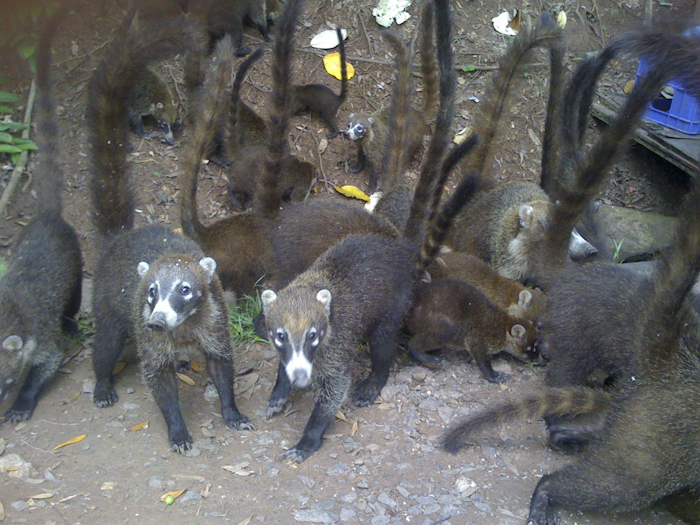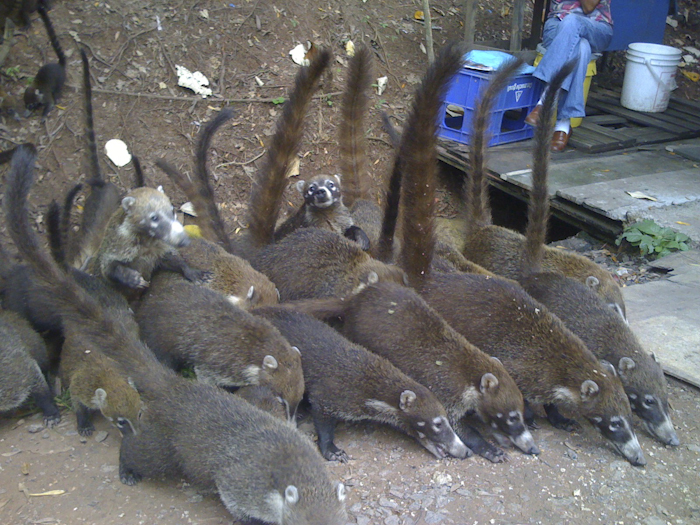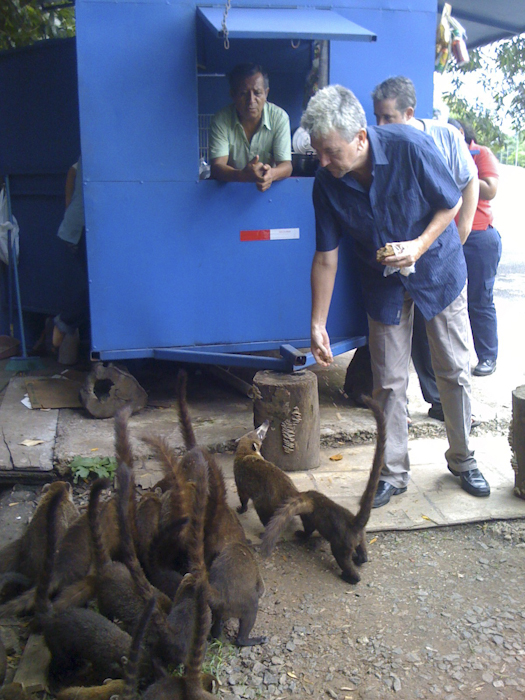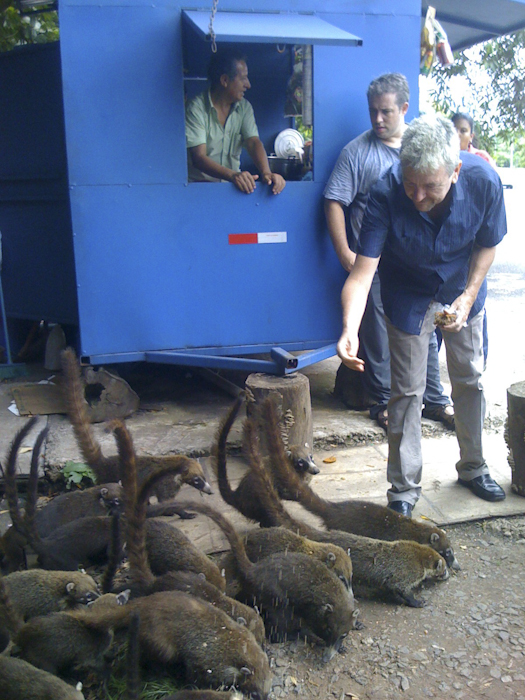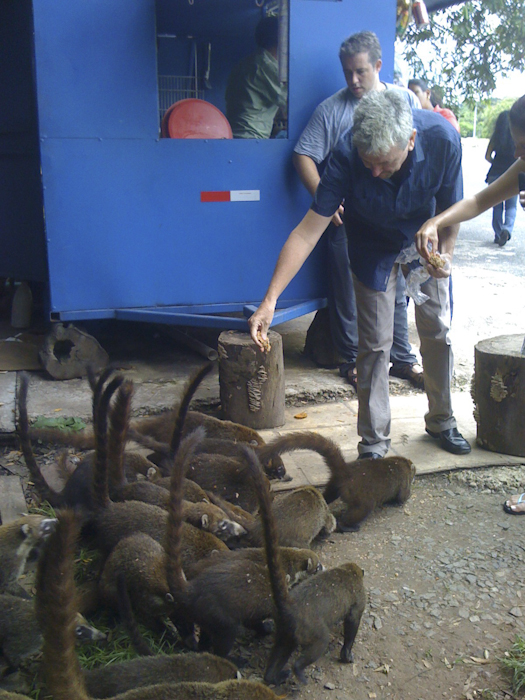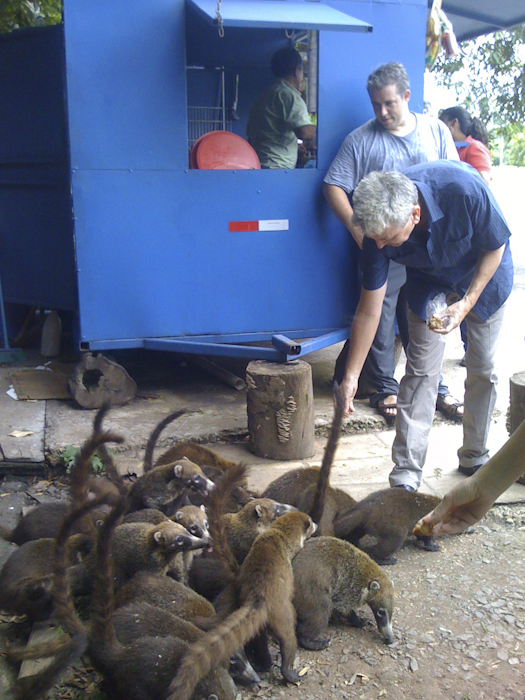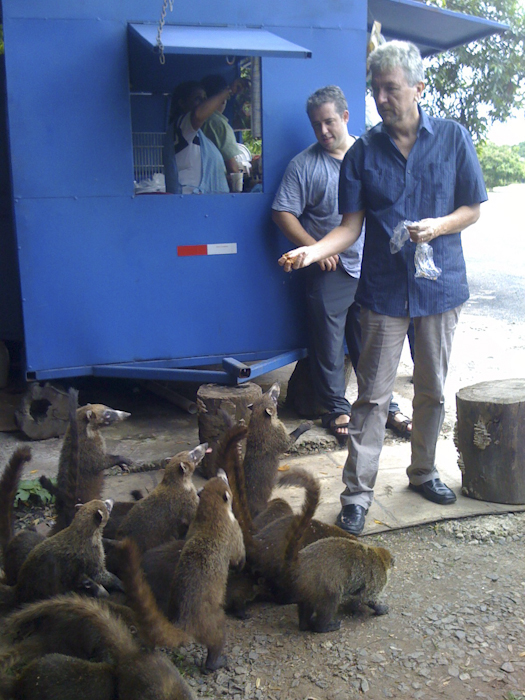Experience Panama's Wild Coati Mundi (Gato Solo)
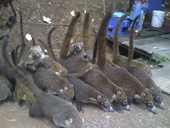
Visiting a zoo to view exotic animals is loads of fun, but the opportunity to see them in their natural habitat, the wild, is even more exciting. During a visit to Monkey Island, visitors have the opportunity to see the Capuchin Monkeys in the wild and even have an up close and personal chance to feed them; it's been said that such trips are the highlight of a trip to Panama for many visitors. However, a long trip isn't necessary to experience the natural wildlife of Panama. The Gato Solos, a name used by Panamanians for the Coati Mundi, can be see in your typical Panama neighborhood bordering the jungles.
Common to Central America, the Gato Solos are friendly and used to being around people. In Albrook, a vendor sells treats for visitors to purchase and feed to the Gato Solos that live in the brush nearby. With over 100 hungry Gato Solos standing by, ready to be fed, many visitors become overwhelmed by the critters tugging on their pant legs begging for food. They are wild animals, so visitors should exercise caution; however, the Gato Solos are really quite gentle and will eat out of your hand.
About the Coati Mundi (Gato Solo)
- Appearance
The White-Nosed Coati (Nasua Narica), or Gato Solo, is a small, racoon-like mammal with a slim body; long, ringed tail and long, truncated snout. Their ears and legs are short and their coats are reddish or black with lighter colored underbelly.
Natural Habitat and Locations
The White-Nosed Coatis live in areas stretching from the S.W. United States through Mexico and Central America, including all of Panama. From here, the Gato Solos move through N.W. Colombia; it's in these areas where they are found to occupy a range of deserts and savannas, but are usually found in wooded habitats like temperate oak and pine forests, lowland rainforests and cloud forests.
- Eating Habits
As diurnal creatures, meaning the Gato Solos are more active during daylight hours, they spend about 90% of their waking hours foraging; although the Gato Solos spend the majority of their foraging time on the ground, they are excellent climbers and can be found climbing trees in search of food.
While the Coatis are descended from carnivores, their eating habits are more omnivorous as they consume mostly fruit and invertebrate animals.
- Gender Behavior
White-Nosed Coati have been given the name Gato Solo due to the solitary nature of the males; Gato Solo, in English, means "lonely cat." Unless the male coati is mating or under the age of 2, he will leave the pack. The females, however, are part of a very social group of other females and their offspring.
- Predators of the Coati
Subsistence hunters, or hunter-gatherers, hunt for the Gato Solos for food. It's for this reason that the coati populations are declining rapidly.
- Domestic or Wild?
The White-Nosed Coati are quite familiar with and comfortable around humans and can be found near hotels and nature lodges as their natural, wild habitat shrinks.
Despite their friendly behavior with humans, the coati are still wild animals. Although many are captured and sold as pets when they are young and playful, the coati become extremely powerful and temperamental as they grow. Their sharp claws and teeth make them too dangerous to domesticate as they can easily harm humans, particularly small children.

